Time is running, right? I was browsing my digital picture archive the other day and found the shots of my first real offshore sailing trip with my beautiful kids: Is it really four years in the past already? I couldn´t believe it! How sweet, small and innocent my boys are – and look now, sailing the Opti like a pro. It makes me proud as a father and sailor, but it also shows time and again how fragile our little precious offspring really is. They need protection, on land as well as underway on water. And you know it: I am a Secumar fanboy for real. Why? Because it´s the best. Frankly. And I am going to show you in this article why.
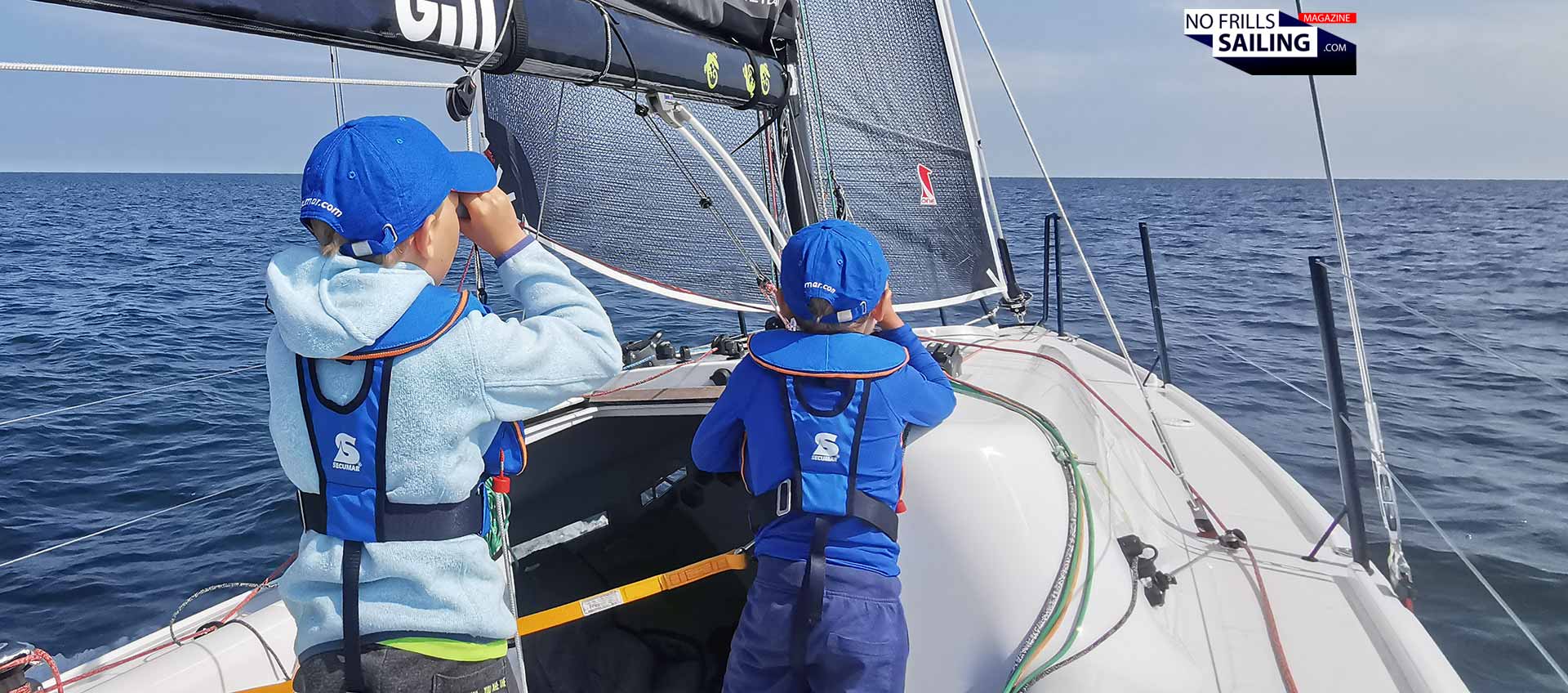
Let´s start by the fact that I do not ever safe money on safety. Your life jacket is the last resort of protection, the last line of defense when all the other precautions have failed. Going overboard is and should be a major concern if you are sailing. Especially when kids are on board with you: They often don´t have the same sense for self-protection, don´t have an adult´s strength to hold tight and sometimes become careless. For me, safety is number one priority when I am underway with my kids: Of course both are equipped with high-grade automatic life jackets. Always from Secumar. Why? You may read this article about my firstborn going overboard a couple of years ago, that´s where it all started. But back to last weekend.
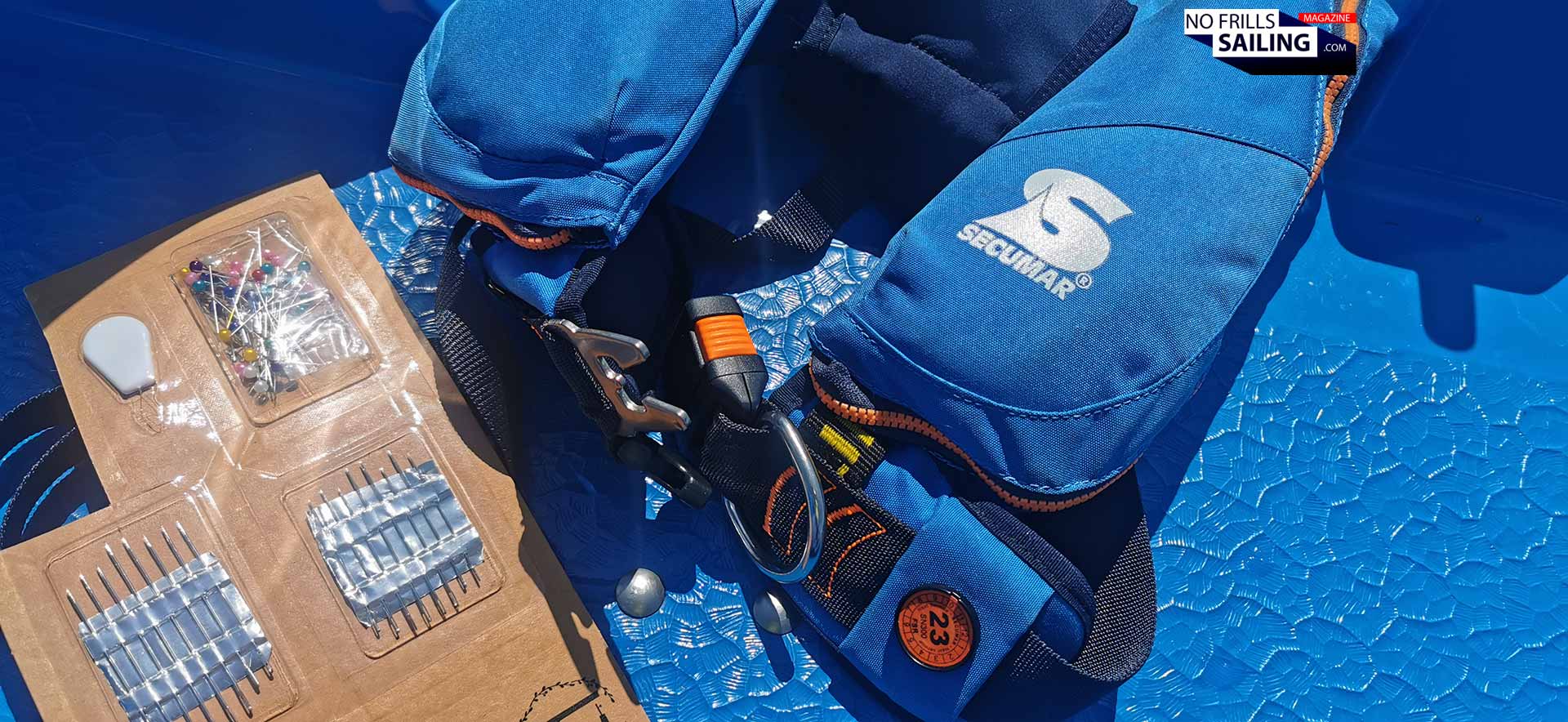
It was a glorious Saturday. High season summer in Germany and since my own new boat is still in the shipyard under construction (and won´t be finished until next year), I have to resort to some other watercraft to at least don´t lose too much touch to this liquid element. With temperatures hitting the 30 degrees Celsius, we decided to pack a bag: Fresh Melon, lots of water, our Speedos and we rented a paddleboat. Not quite the offshore-feeling but very lush: Luebeck is a green city with lots of canals and two rivers passing through, it takes only half an hour and you find yourself in the midst of a lush Mississippi-style European rain forest natural reserve. Wonderful!
A welcome occasion: Sailing kid´s safety training
And here´s my plan: Why not try to put the Secumar Junior life jacket to a real-life test? I could kill two birds with one stone here. My kids up to now only know how it feels to jump into the water with a solid life jacket (we´ve trained this, check this article) but never really tested how an automatic life jacket feels like. Since my kids are grown past the size of the Junior-vest and those are also two years past their last due check-up, I decided to “sacrifice” the life jackets for that matter.
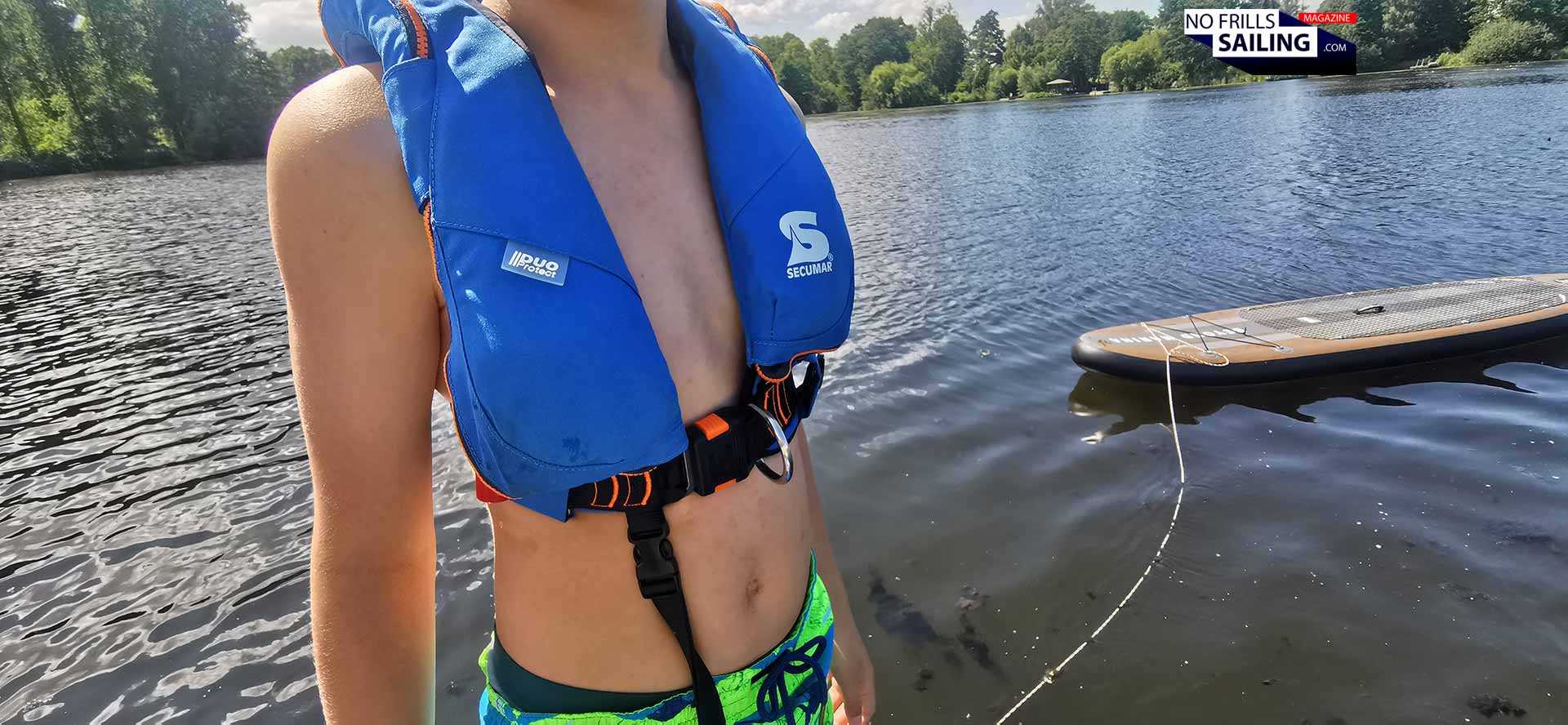
The scenario is the following – and I guess it sounds very familiar for you, if you are a sailing parent: You´ve just arrived in a new marina. Berthed the boat and your kids are full of energy, eager to jump on the pontoon and roam the new location. As they had to sit still on the confined yacht, the crave for running around, romp to the near playground and play tag on the pontoons. “Don´t be all too wild!”, you remind them. But off they run. Well, you are happy anyway. Enjoy your traditional berthing beer, indulge in to the quietness of a calm harbor. Meanwhile your kids are on a fun rampage. Maybe they toss their life jacket away into a thornily dog rose. Or falling down after stumbling in a wild tag game … anyways: Here we go – the jacket has been punctured! Sounds unlikely? Well, it´s not.
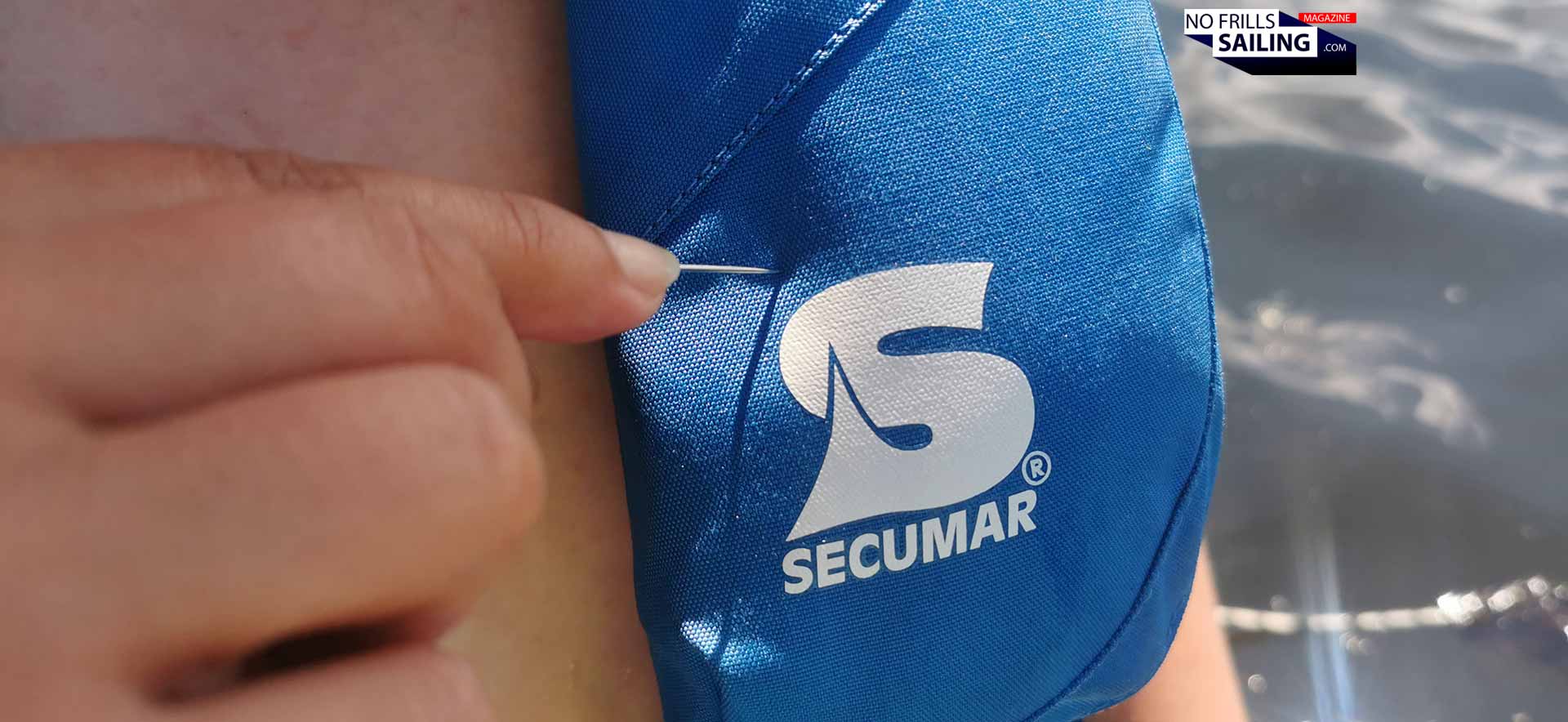
It is so very likely, that apparently Secumar decided to develop a life jacket for children that is made to withstand exactly this! They call it the “Duo Protect”-system. It´s part of their children products-line and available as “Mini” and “Junior”-sizes for sailing kids from 15 to 30 kilograms and 20 to 50 kilograms. My two volunteers were at first a bit concerned, which is a good thing of course, nobody should punch a hole through a life jacket! But then they agreed to be my test dummies for this exciting test. Apart from confirming (or debunking) that the “self-healing” life jacket works, they could at last test in person how the inflation process feels like. Let´s go!
Punching a hole into a life jacket
Taking pictures myself, I asked my spouse to handle the penetration part this time. Therefore I had brought my never used mending kit aboard our tough paddleboat and with a bit of a shaky hand she chose the biggest needle and put it right into the life jacket. I asked her to punch one time, approximately one centimeter: I don´t think that there are longer thorns like that in nature, at least not where kids are going to play near a marina or harbor. Well, maybe in Australia, but that country is a different breed in terms of hazards I guess …
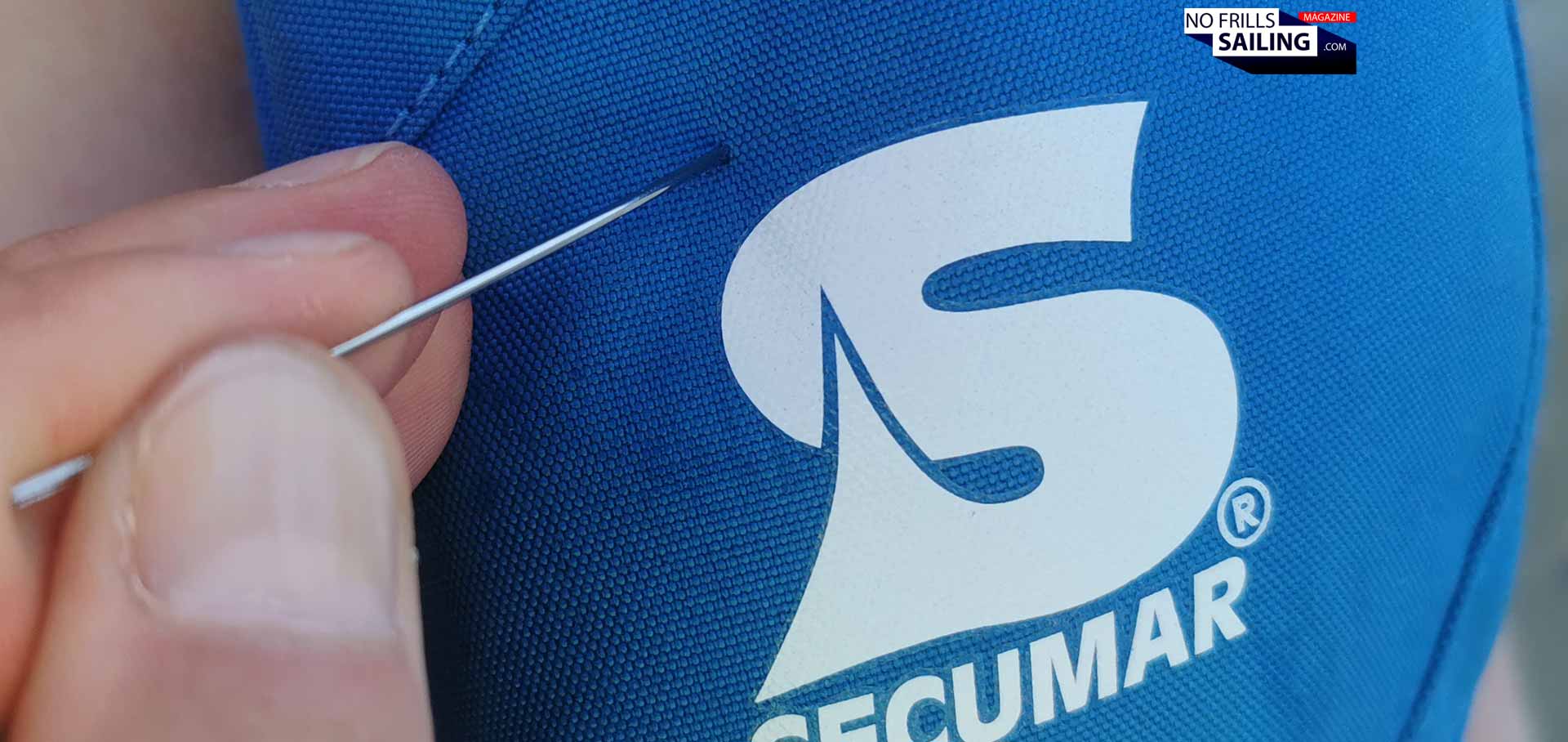
To get a feeling for myself, I removed the needle again. And here´s our first observation: Albeit utilizing a metal needle made from steel (which, I´d say, is much, much harder and spiky than any natural thorn could ever grow), my wife told me that she had to push really hard to even penetrate the blue outer layer of the life jacket. And I can confirm: Pushing out the needle took much more force than expected. That´s a first plus: These kid´s life jackets seem to be really rugged! My poor little son was a bit afraid and slightly shaking, seeing us demolishing his jacket – but for the sake of science, he grit his teeth.
Does a punctured life jacket still work?
Well, that’s the question, right? If your kids “manage” to get a hole into their life jackets and nobody would recognize it (later more on this detail), would the jacket still work? Of course, the inflating mechanism must do its job since it doesn´t care if there´s a hole or not, but will the life jacket´s floating device a) get filled up with CO2 and completely inflate and b) will it hold the gas, thus keep its buoyancy and c) for how long will it be able to float on the surface before losing too much gas through the hole we punched in it? Let´s check it – one – two – three: Man overboard!
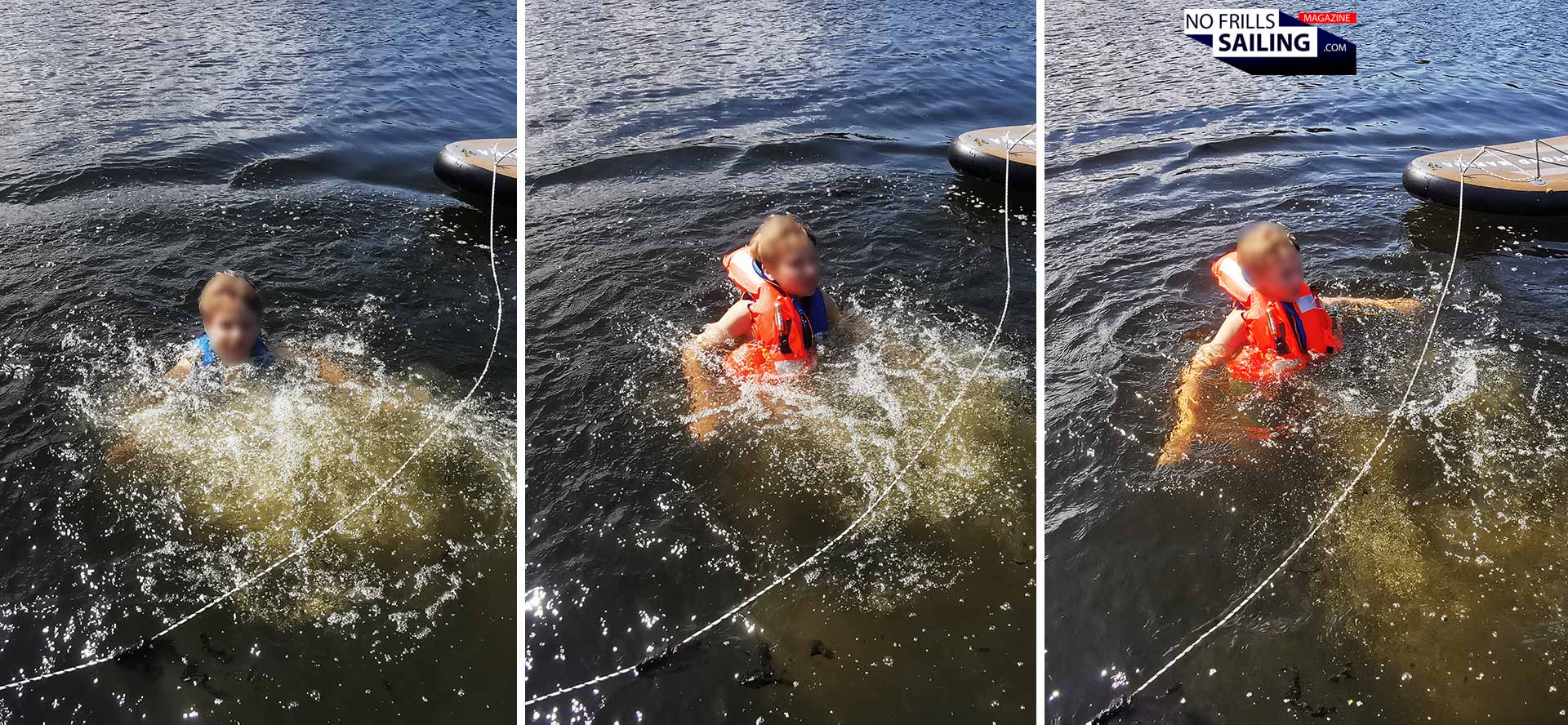
My son gently jumped from the deck of our paddleboat that was drifting gently in the middle of the wonderful lake. Just a few seconds later we heard the unmistakable sound of gas rushing, like a balloon being emptied. Only that this time, a “balloon” got filled up. It´s an official law (at least in Europe) that an automatic life jackets must start to inflate after a maximum of four seconds after being submerged in water: This jacket was much faster. My son popped back to the surface, his eyes wide open, partly shocked, partly excited. And then … silence.

I told him to stay calm. No swimming, no yelling. “Do you hear something?”, I asked him: “Any sound of gas venting? Can you see bubbles around you?” Nope. He shook his head, smiled and just laid back. Enjoying the moment. We let him drift for quite some time. Obviously we couldn´t simulate a real emergency at sea with hours in heavy water until rescue arrives, but I let him have his fun. After a few minutes we pulled him back up to our boat alongside. I checked the floating device: It was firm and tight, felt very hard. I pushed it underwater so that he could still breathe, just like a punctured bike tyre, to check for bubbles emerging. Nothing. Okay. Amazing …
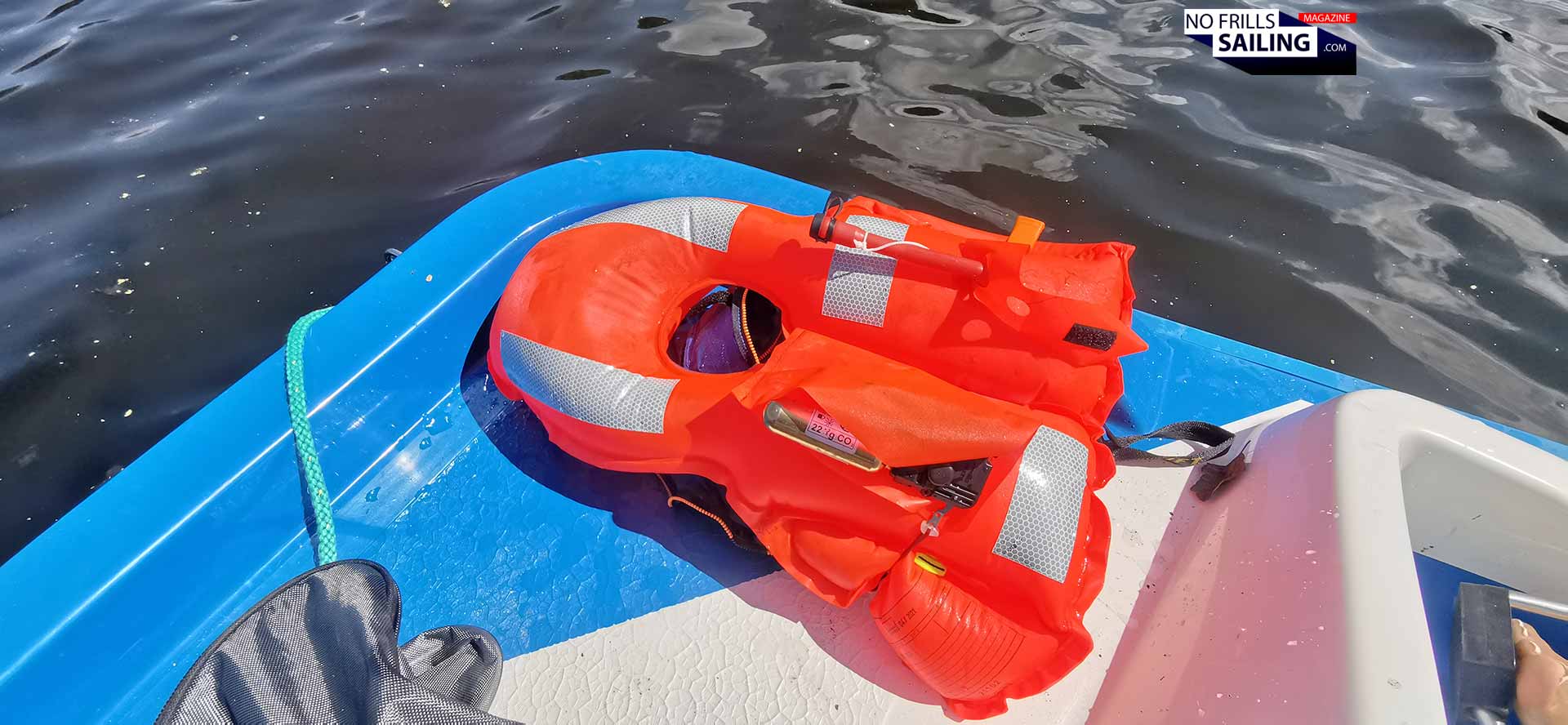
After some 20 minutes more of bathing fun, we pulled him back aboard (thanks to the lifting strap that´s no problem) and helped him to peel out of the life jacket. Kneeling down on the foredeck of the paddleboat I again inspected the red floating device as thoroughly as I could. I even put my ears on it, trying to hear something. Again, nothing. This life jacket was swollen hard and working just as perfect!
Confirming the result: A second test
So, you may think now what went through my head as well: Maybe the puncture wasn´t really going through, maybe the angle of attack was too sharp and there wasn´t a real hole? That´s perfectly fine, I was skeptical too. Thank God I have two kids, each one owning his own life jacket. We need a proof, a confirmation, I said and so it was the turn of my younger son to getting punctured as well. With his older brother assuring that it was big-time fun, he agreed and put on his jacket. A bit sad that it would be the last time, though.
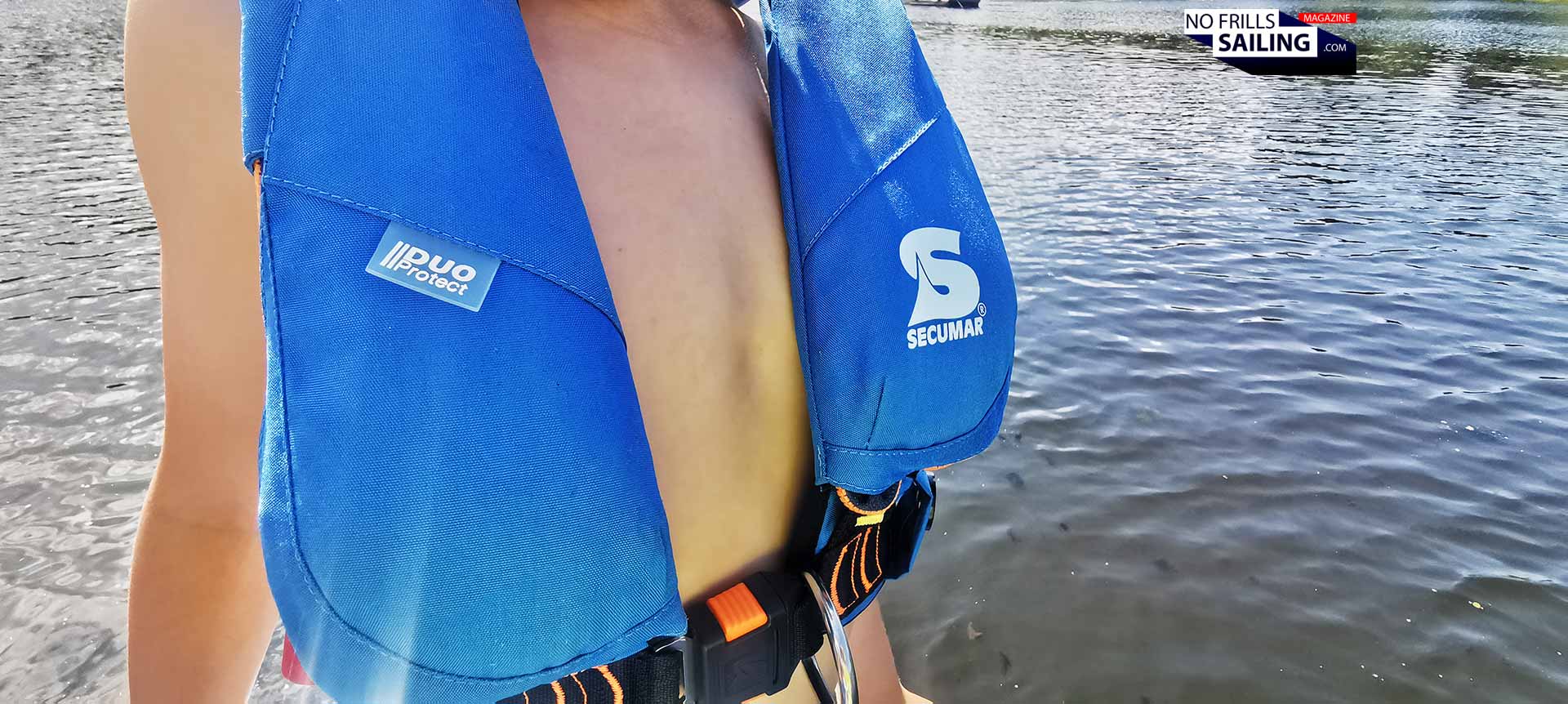
This time I decided to punch the hole myself, asking my spouse to take the pictures. And I can confirm now: It takes quite some effort to put a sharp needle one centimeter into the vest! I also deliberately chose a different location for the hole: Whereas we punctured the upper-left part of the first life jacket, I went for the lower-right part in this second test. The needle also went in about one centimeter – even at that point I would have concluded that the probability of a natural solid spike being able to penetrate that deep is miniscule.
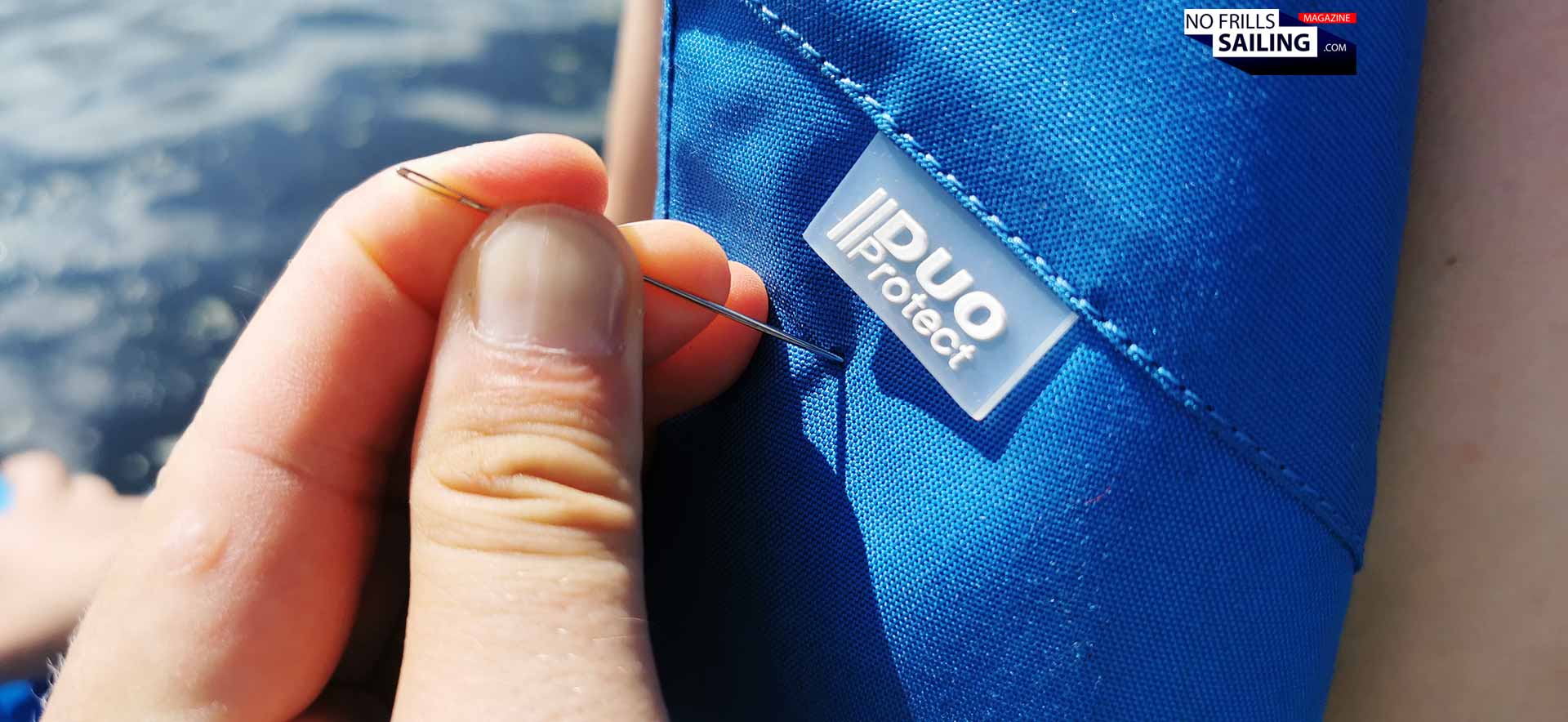
Of course you can imply that this is all staged and that nobody is so stupid to waste away a perfectly fine life jacket worth 280 Euros (times two) just for making a blog article. I assure you that this is neither staged nor paid for – I am really that crazy! In the picture below you can see in a closeup view how the hole looks like when the needle has been removed. That´s the problem: Visual identification of possible damage or punctures – if the thorn or spike that has penetrated the life jacket is not still stinging in the jacket, it is almost impossible to spot a possible hole.
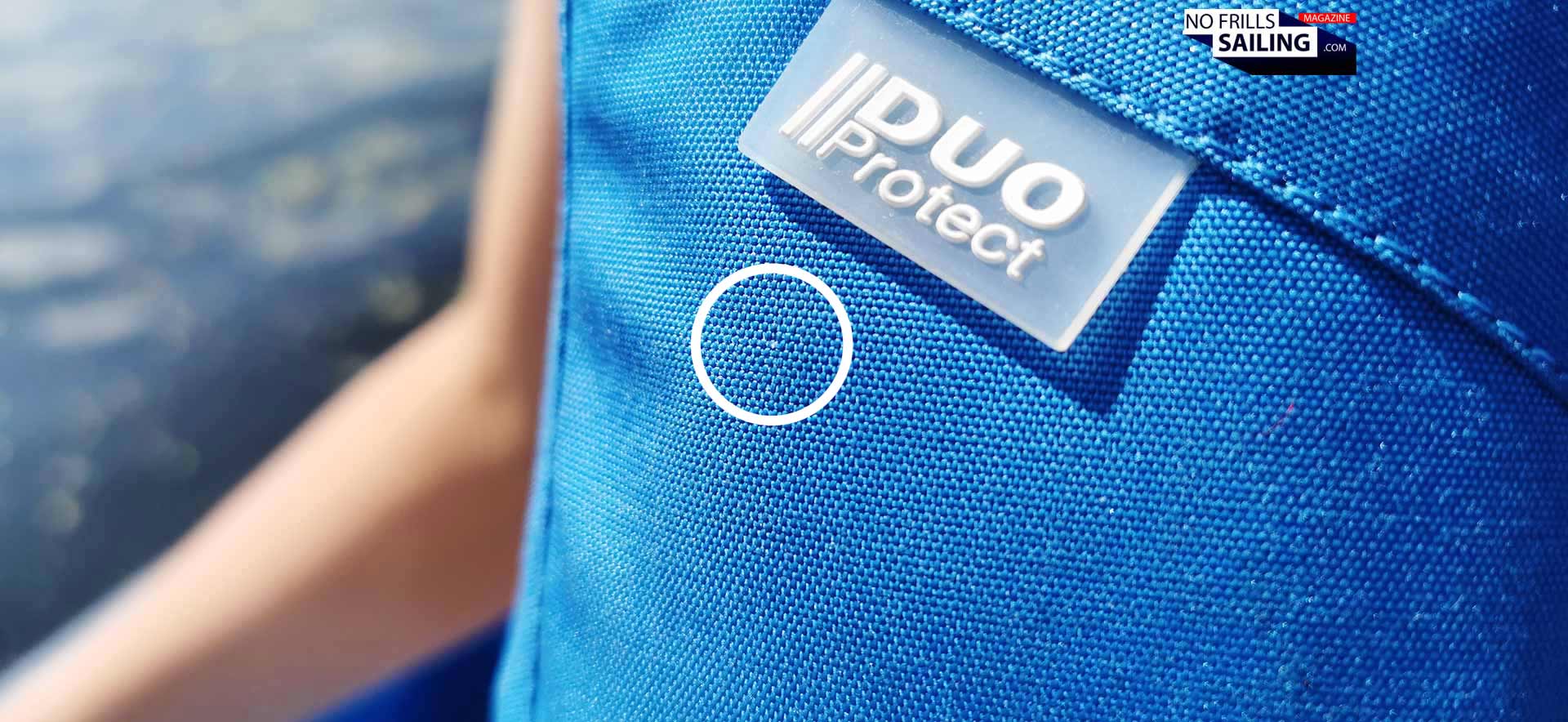
Even more so if the life jacket is worn down or dirty. Again, that is, I guess, why the guys at Secumar have invented this product: Because you cannot be sure, because you probably won´t find anything even if you checked for it. Could you have spotted the tiny hole in the white circle as shown above? I don´t think so.
It works. Again!
So, let´s do the second check-test: One – two – three – jump! And my little boy goes into the water, this time the life jacket goes off even faster. He pops back onto the surface with a joyful scream. “That´s so much fun!”, he yells. Again, I ask him to be quiet and look for signs: Bubbles, venting sounds, loss of pressure in the floating device. Again, nothing.

And so he drifts about a bit. As part of their safety training I tell him to try to swim, to try and find a comfortable position, mimicking what hopefully never occurs. “Imagine being afloat like this for hours”, I encourage him. How does it feel to be adrift? How easy is it not to give in the natural and trained impulse to bend over and swim, but to rather lean backwards and … do nothing? “Can you roll yourself onto your chest?”, I ask – he tries it. Nope, no chance: The floating device will force him ever so gently but relentlessly into the backstroke position. That´s the best way to be protected against spray and overcoming water and only to keep free the breathing openings of unconscious people.
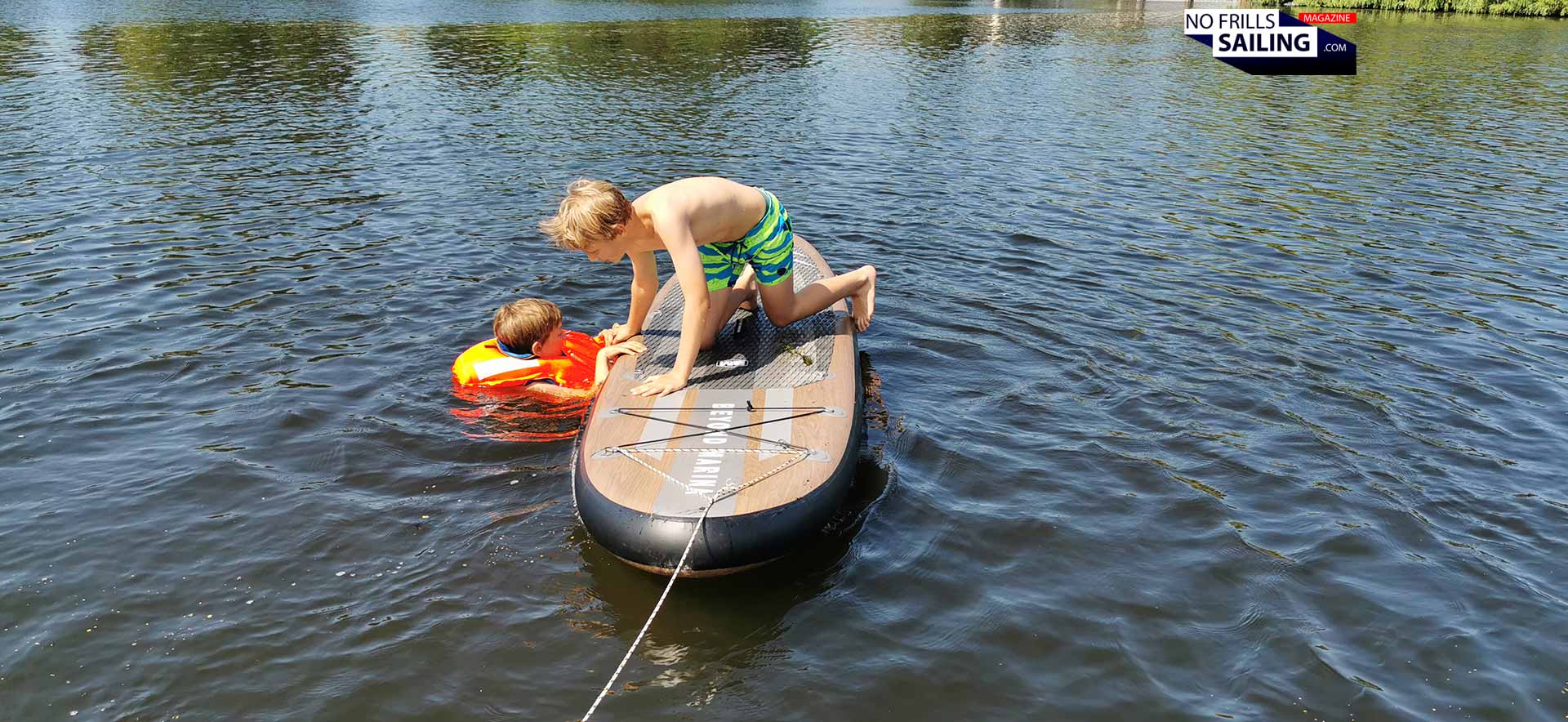
My older son comes to the rescue, trying to get him aboard the SUP. That´s also interesting to witness: It´s an ongoing discussion amongst sailors about how many Newtons your life jacket should have. More Newtown mean more buoyancy. More buoyancy is achieved through more floating devices – but more of thick those signal red floats also mean much more restrictions of your own ability to swim, move and ultimately climb aboard rescuing vessels. My kids just trained it: We could only get the little man back aboard with unified efforts – and this is a lightweight kid without heavy soaked clothing … But that´s something for another article, I´d say.

Storing the second life jacket on the foredeck, I again inspected the floating device and tried to spot the hole. I couldn´t see anything. Also, no venting sounds, no apparent loss of pressure. It just felt like any other life jacket I´ve tested so far. Can we confirm now that Secumar´s Duo Protect-system really works? Not so fast. I don´t know what the regulations say about how long an inflated life jacket should be holding it´s pressure, but before we praise the company, let´s wait!
A few moments later …
… to be exact, more than 28 hours later the next day. Back in my flat. Both life jackets are now inflated for more than one day. Of course they are not fully pressurized anymore. I can squeeze and press the floating devices so that I would estimate that they have lost some 30 to 50 percent of their pressure. That´s normal: I remember some weeks ago when I wanted to explain to my kids how the inflator works, I accidentally triggered the device and the life jacket inflated. It remained full for hours and more than a day later had lost approximately the same amount of pressure.

Now I can confirm: Apparently, with a punctured floating device, the Secumar Junior life jacket still operates normally and keeps its CO2 pressure at least one day! Thanks to the Duo Protect-system the float will somehow remain unimpacted and even if your kid manages to find a mean thorny bush with steel-hard spikes to punch a hole through it – you can rely on this life jacket! Apart from that, the Junior-vest is as well equipped with a mouth piece through which normal breathing air can be put back into the floating device at any time. So. The article could end now. Proof of concept. Two tests. All is fine. No, not for me. Because I want to know how it works – how is this achieved?
Cutting it open: Inner workings of a life jacket
Since I´ve devalued the life jackets with punching holes through it anyway, i´ve produced some very expensive rubbish. Indeed, Secumar could repair the life jacket by taking of the damaged floating devices and put on new ones, but as the guys assured me over the phone (of course I called before the scissors were put to work) this would be much more expensive than just buying two new jackets. And so, let´s cut ´em open, shall we?
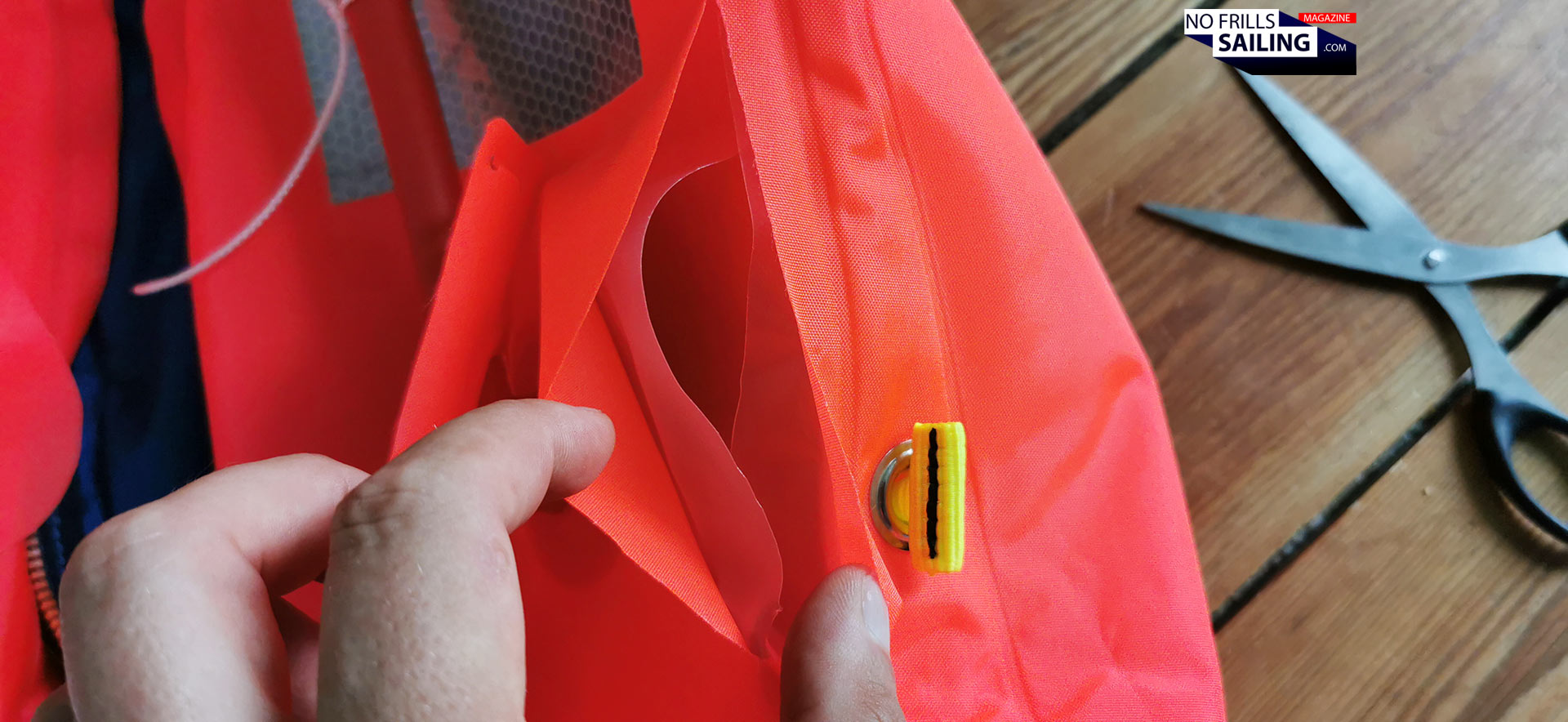
Again, only putting the scissors into the half-inflated float was much harder than I had expected. Once through, with a low puff, the last remaining pressure inside vented out. The red float collapsed back into a loose pile of plastic. Making a first cut, I discovered what the “secret” of Secumar´s childrens life jackets really is: There is not one, but two layers for the floating device! One signal-red outer and one transparent inner layer. Furthermore, I widened the cut and inspected the material. The transparent layer felt … strange.
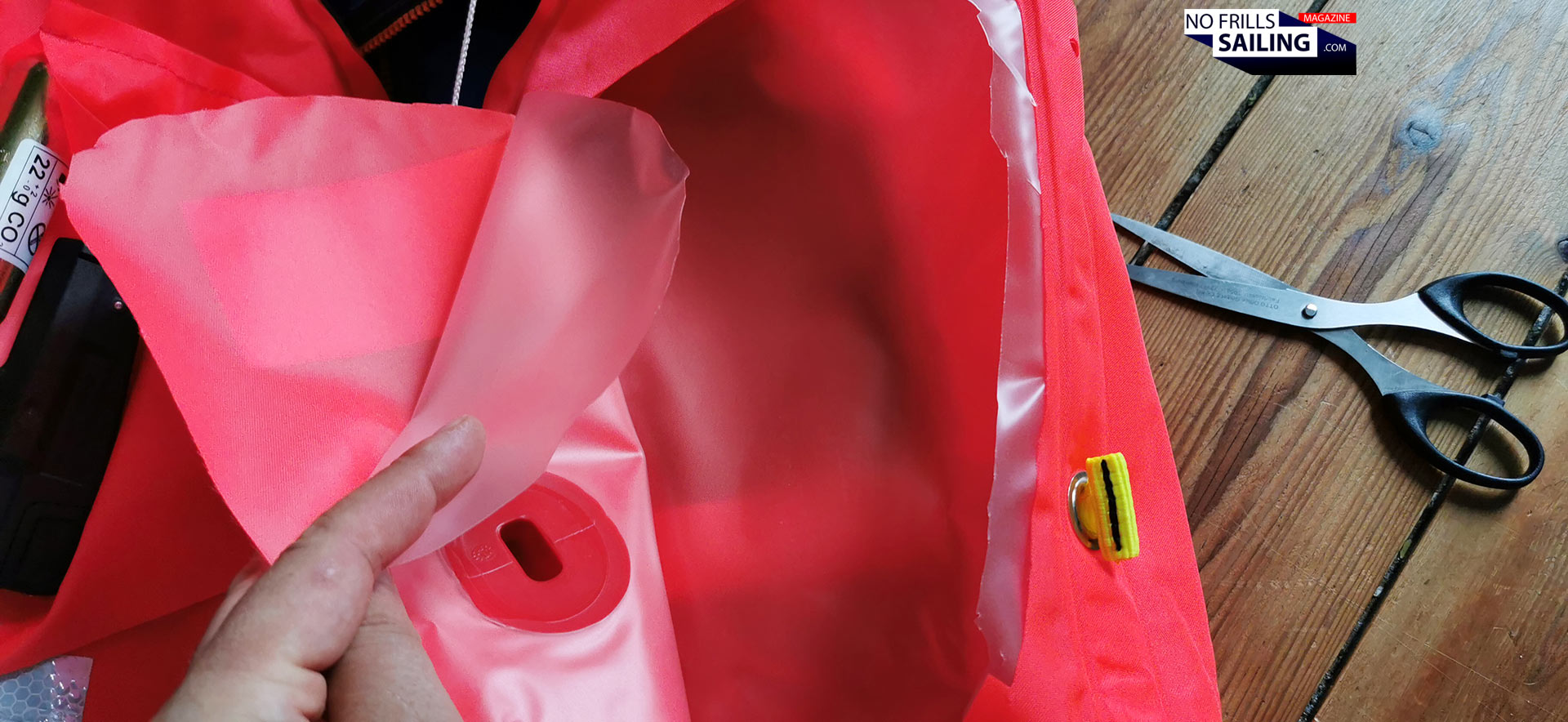
It had a very soft, almost “moist” surface feel to it. It was dry, no moisture at all. Do you know this strange, thick, “soft” plastic? Sometimes supermarkets in Italy have grocery bags that feel almost the same. I begin to conclude that maybe this “softness” is deliberate, to act as some kind of “mechanical glue” or for clogging a hole? I don´t know, I am not an expert, but both the underside of the outer layer and the outside of the inner layer felt like if they would somehow “stick” together …
This is how Secumar´s “Duo Protect”-system works
Here´s the secret, The “Duo protect”-system, shown in principle: I´m cutting out a square of the two layers and punch the needle through it, basically, this is what happens in the dog rose bush when the spiky thorns come into play. Both layers are compromised, a hole will form a channel now where the CO2, once deployed, could leave the floating device, thus rendering the life jacket worthless.
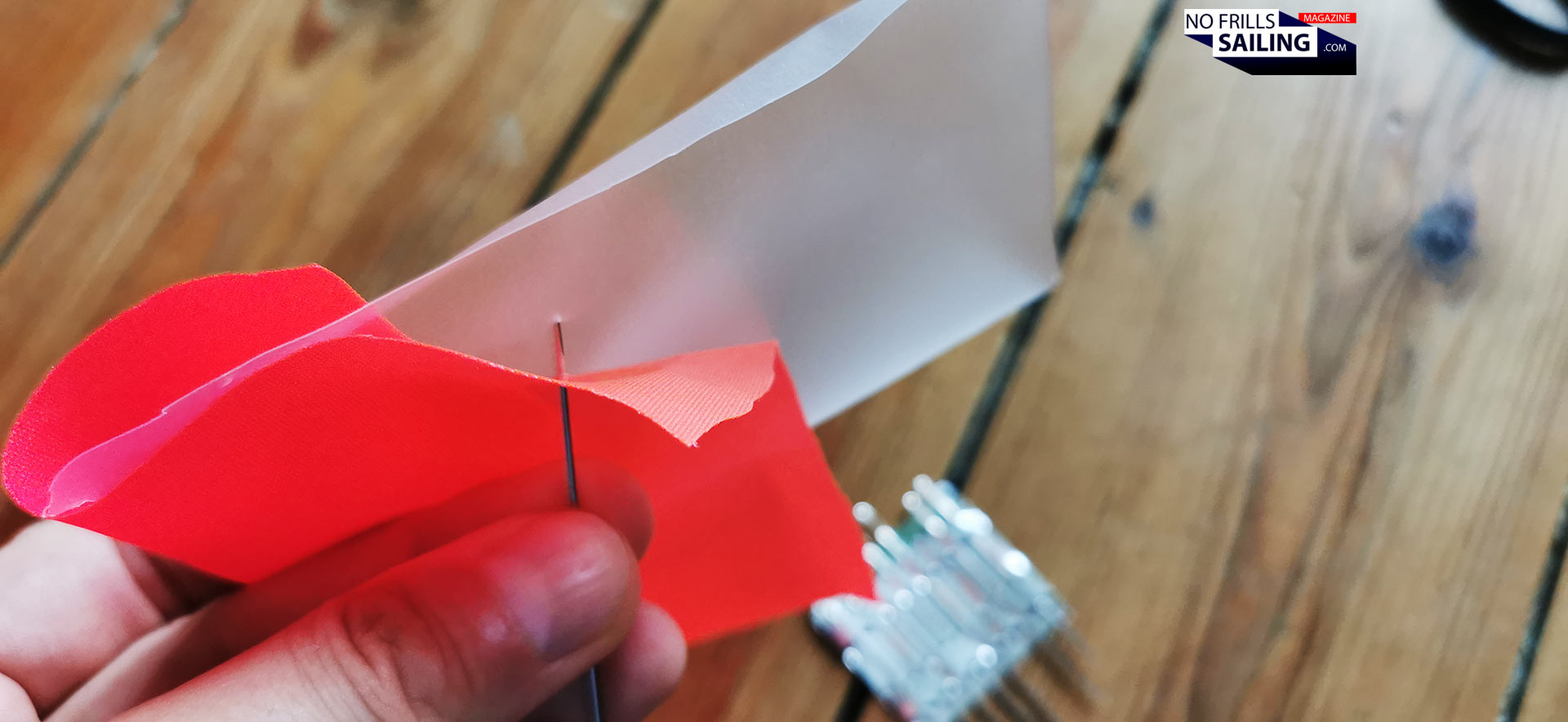
Here´s the trick. Uninflated, densely packed, the two layers may be punctured. Both holes are on top of each other, “air” could escape. But now, when the floating device gets filled with CO2 and inflates, and it gets pumped up, both layers will change “location” by unfolding and stretching. The layers are folded and packed in such a way that if unfolded and filled with the CO2 gas, the inner layer will not be at the same location as it was before: The second hole has “traveled” some centimeters.
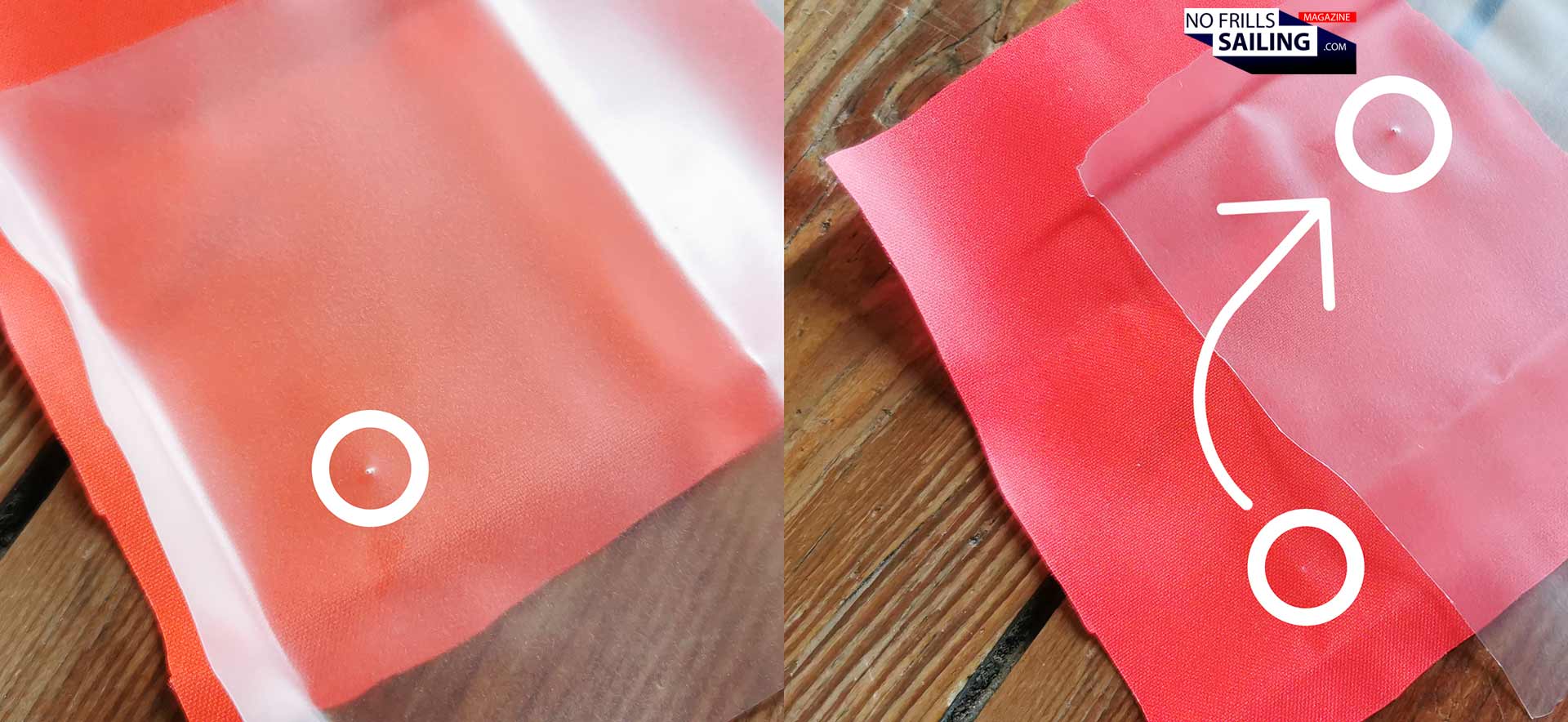
The holes are still there, but since these are not over each other anymore, both are now blocked by the respective layer that is not compromised – hence: Sealed! Apparently, this is also the reason why the second layer is so “soft”, at least it feels that way: It should seal any opening. The high pressure inside of the floating device is pressing the inner layer into the outer layer and that way “closing” the holes. What an ingenious idea, right? And as I have seen the day before, even with a big steel needle getting punched one centimeter into the material, the life jackets still worked perfectly – and held their pressure for at least one full day.

Besides – and now I am ripping open every part of the life jacket – there are many more safeguards protecting the Junior-life jackets built into the life jacket: The complete front of the device´s covering material is double-layered. Apart from the very sturdy material there´s a 3-4 millimeter hard foam layer working as a barrier and an third, backside, layer of rugged denim. I take it further apart and realize: This is made to last. And also, made to withstand.
Don´t bargain for (your kid´s) safety gear!
In the end I am very happy and relieved. Relieved because of the fact that I have proof now that everything that has been promised by the manufacturer is true. The Junior life jacket works perfectly and my two tests have clearly shown that even with a thick, serious hole in it, these life jackets simply do their job and are not compromised. They will hold the gas inside the floating device even when punctured for many, many hours – enough time for rescue forces to arrive. That´s a relief. Because, I´ve heard so many time from other sailors that the likeliness of something bad happening is so low and their kids are so well trained, that cheap stuff will do just as fine. “Why spend so much money on these: All manufacturers will have to adhere to the same regulations!” Yeah, they have to, but … really? That´s your point? Saving money versus the safety of your kids is your point?
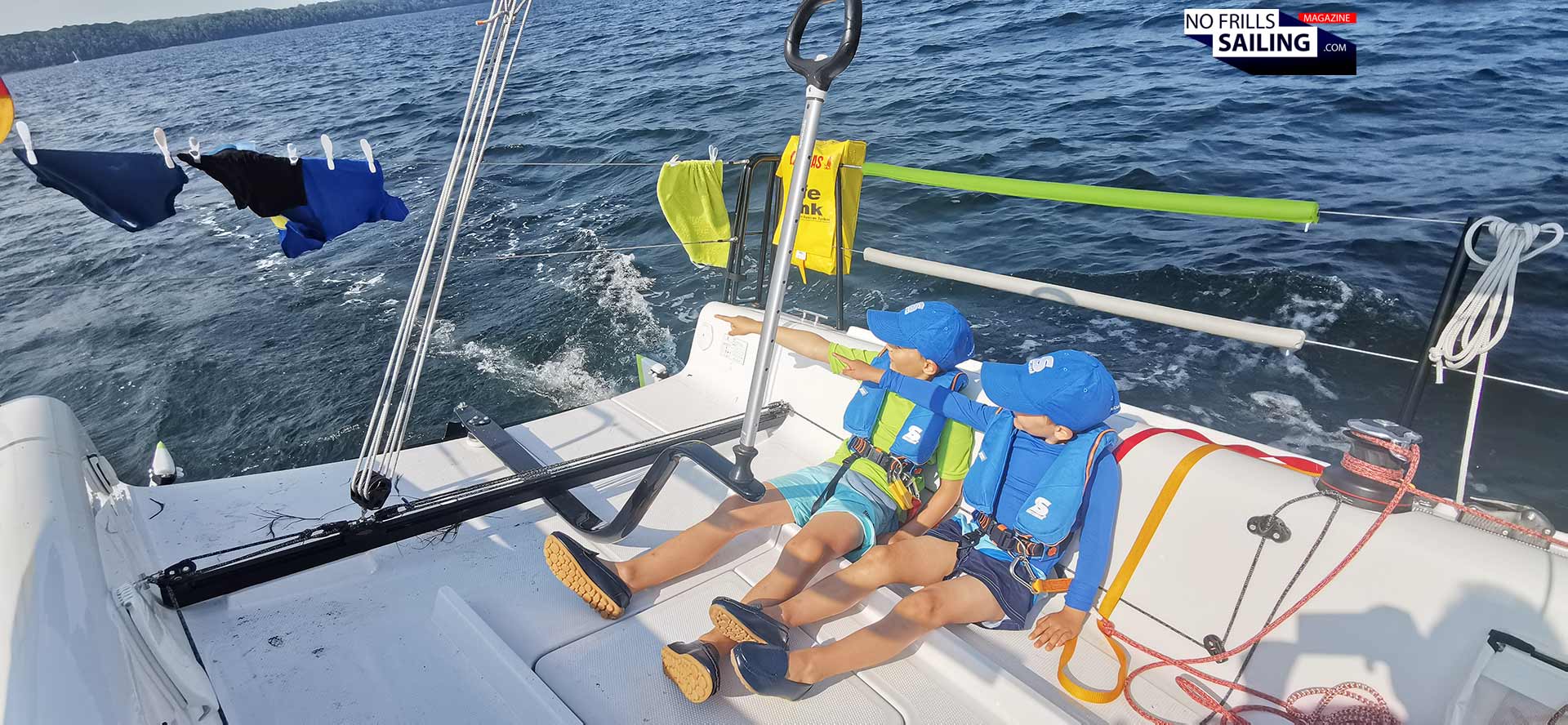
Yes, Secumar´s life jackets for children with Duo Protect-system are expensive. One of these clocks in at 280 Euros incl. VAT. That´s hefty, compared to the 39,90 Euros a quick internet research offered. Well, as for my two boys – wild, rampaging and unstoppable if released – I simply won´t rely on the quality of my training and their ability to take care of their wellbeing. I never ever save money on their safety, I want the best equipment, I want the most safeguards I can get and I want to be 100 percent sure that in case shit hits the fan my boys are protected with the best gear possible. Anyway, Secumar, if you read this, maybe I can get juuust a liiiiittle bargain when I replace these two butchered life jackets with brand new ones? 😊
You may also like to read these articles:
What´s inside? Taking apart an EPIRB
Don´t do this at home: Testing expired distress signals
All articles on Secumar products
